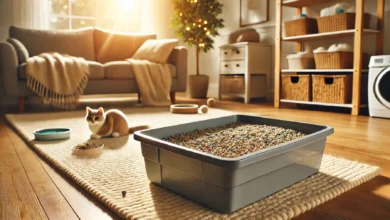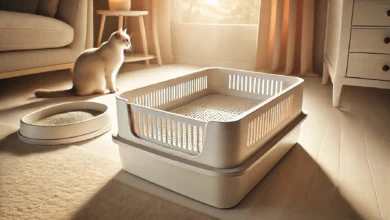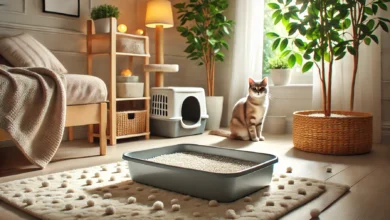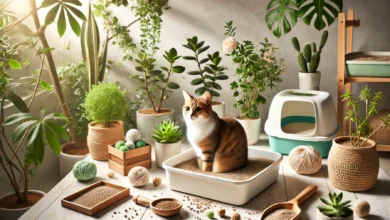Understanding Odor-Blocking Technology in Cat Litter
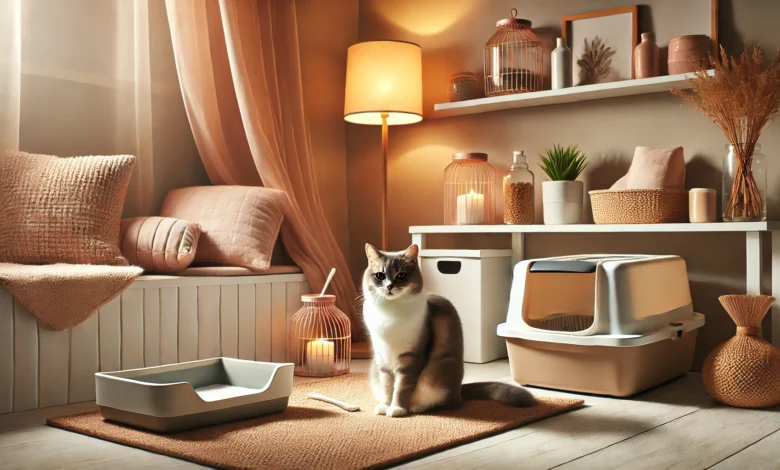
If you are a cat owner, you may be well aware of the never-ending problem of keeping your home fragrant, especially when it hosts a litter box.
The ability to keep the environment pleasant rests on understanding odor-blocking technologies in cat litter.
This article will elaborate on how odor-blocking technology works to empower you in making the best choices regarding your feline friend’s hygiene needs.
Table of Contents
Odor-Blocking Cat Litter: How It Works
Effective litter box odor control incorporates a basic understanding of the origin of unpleasant odors and the methods used to neutralize them.
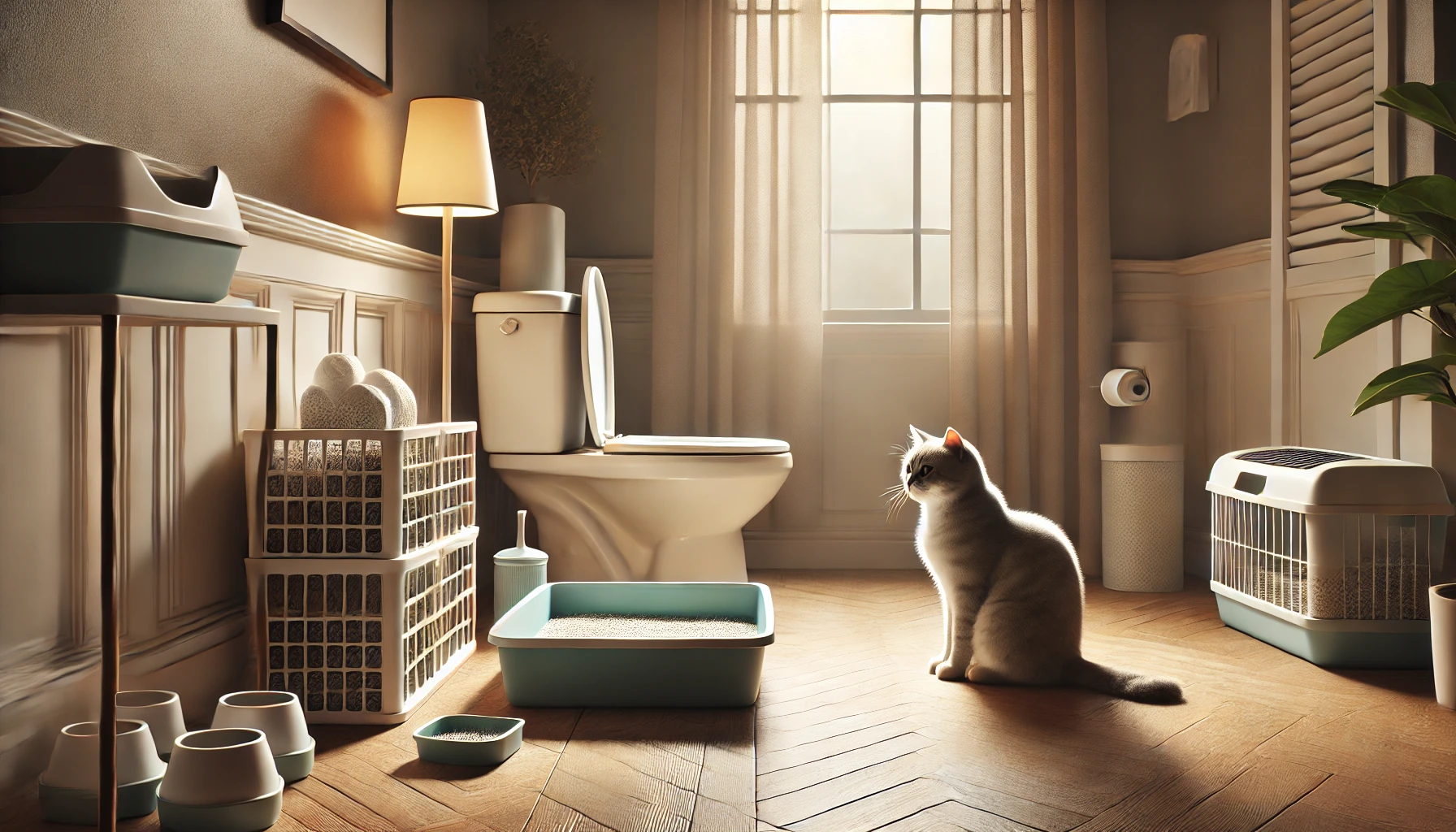
How Cat Litter Box Odors Originate
Each time your cat uses the litter box, waste products such as urine and feces are left behind.
These wastes contain organic materials that decompose and release gases, creating the characteristic litter box odor.
Some primary factors contributing to litter box odors include:
- Ammonia Formation: Cat urine contains urea, which breaks down into ammonia—a strong-smelling compound that significantly contributes to litter box odor.
- Bacterial Activity: Bacteria thrive in moist environments, breaking down organic matter and producing foul-smelling gases.
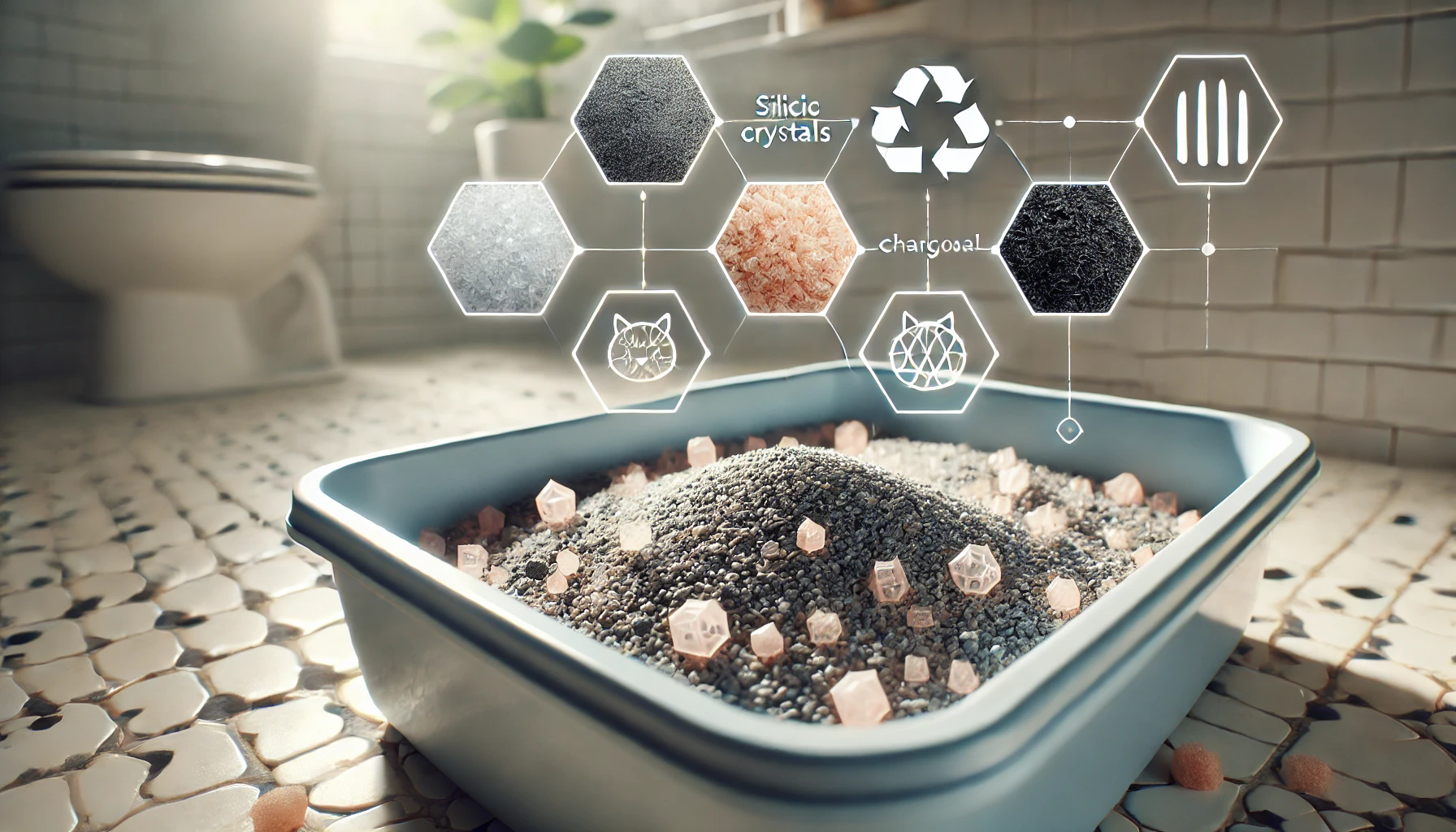
Mechanisms of Odor Neutralization
Odor-blocking cat litters use several approaches to neutralize these disagreeable odors:
- Absorption: Materials like clay and silica gel can absorb moisture, reducing the environment in which odor-causing bacteria grow.
- Odor Neutralization: Certain additives chemically neutralize odor particles, rendering them less volatile and less detectable.
- Antimicrobial Agents: Some litters incorporate substances that inhibit bacterial growth, thereby reducing odor production.

Materials Utilized in Odor-Blocking Cat Litters
Various materials are employed to improve odor control in cat litters:
- Clay-Based Litters: Highly absorbent and effective at trapping moisture and odor.
- Silica Gel Crystals: These crystals absorb moisture and lock in odors, often remaining effective for longer periods between changes.
- Natural Alternatives: Eco-friendly materials like pine, corn, and recycled paper provide a degree of odor control.
Knowing what is in the litter and how these mechanisms work will help you choose a cat litter that suits your cat’s preferences and keeps your home smelling fresh.
Odor-blocking technologies in cat litter are varied, each with its own advantages, and can significantly enhance freshness around the house.
Odor-blocking cat litters are designed to tackle odors at their source, ensuring a fresher environment for both you and your cat. Effective odor control focuses on neutralizing common odor-causing agents like ammonia.
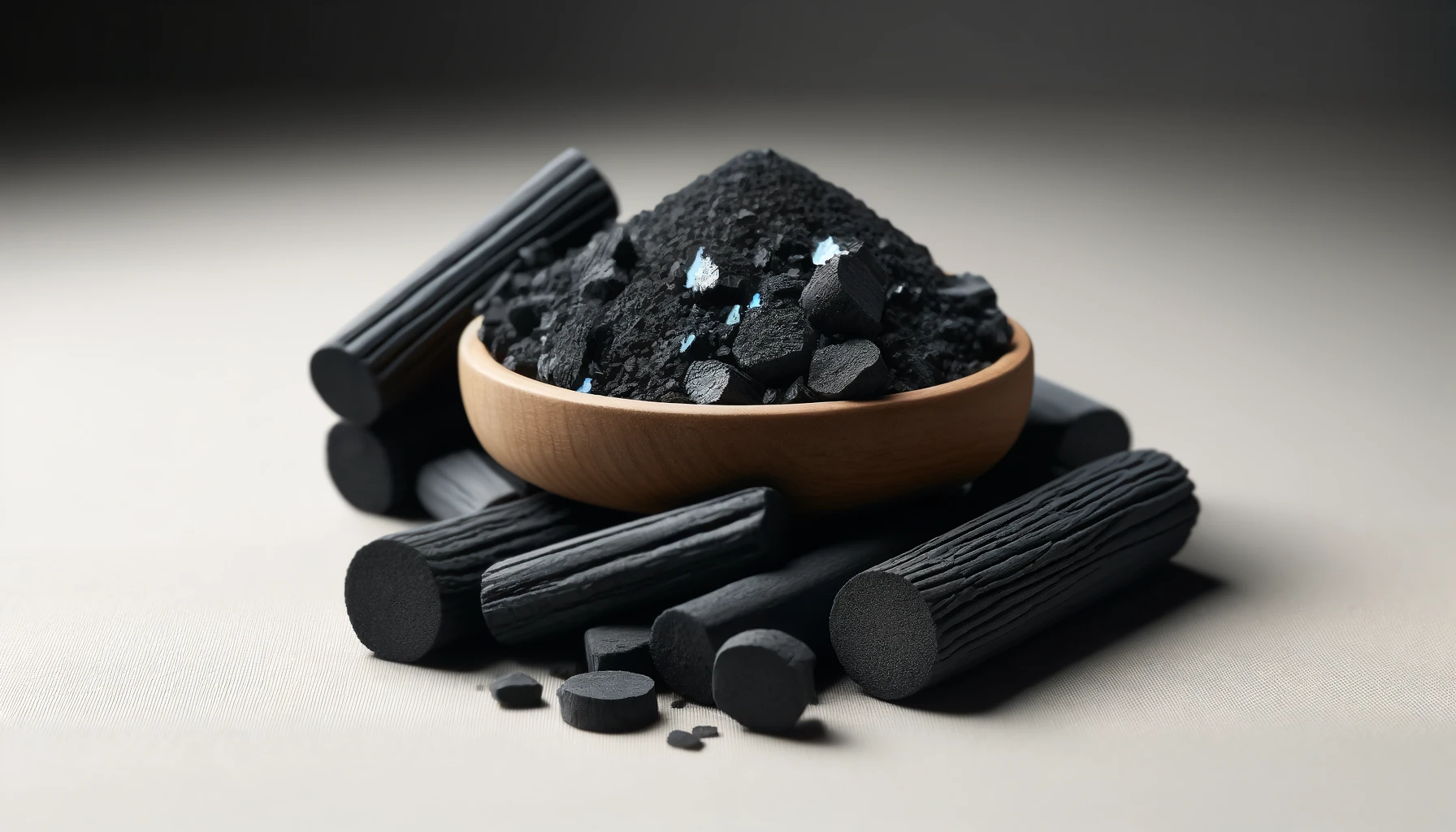
Activated Charcoal and Its Absorptive Properties
Activated charcoal is renowned for its phenomenal absorptive capacity.
In cat litter, it traps odor-causing molecules within its porous structure, thereby neutralizing unpleasant smells.
Thanks to its odor-controlling abilities, activated charcoal is often chosen as a natural ingredient, offering effective odor-blocking without artificial fragrances.
Activated charcoal traps odor particles in its porous structure, offering a natural and fragrance-free odor control solution.
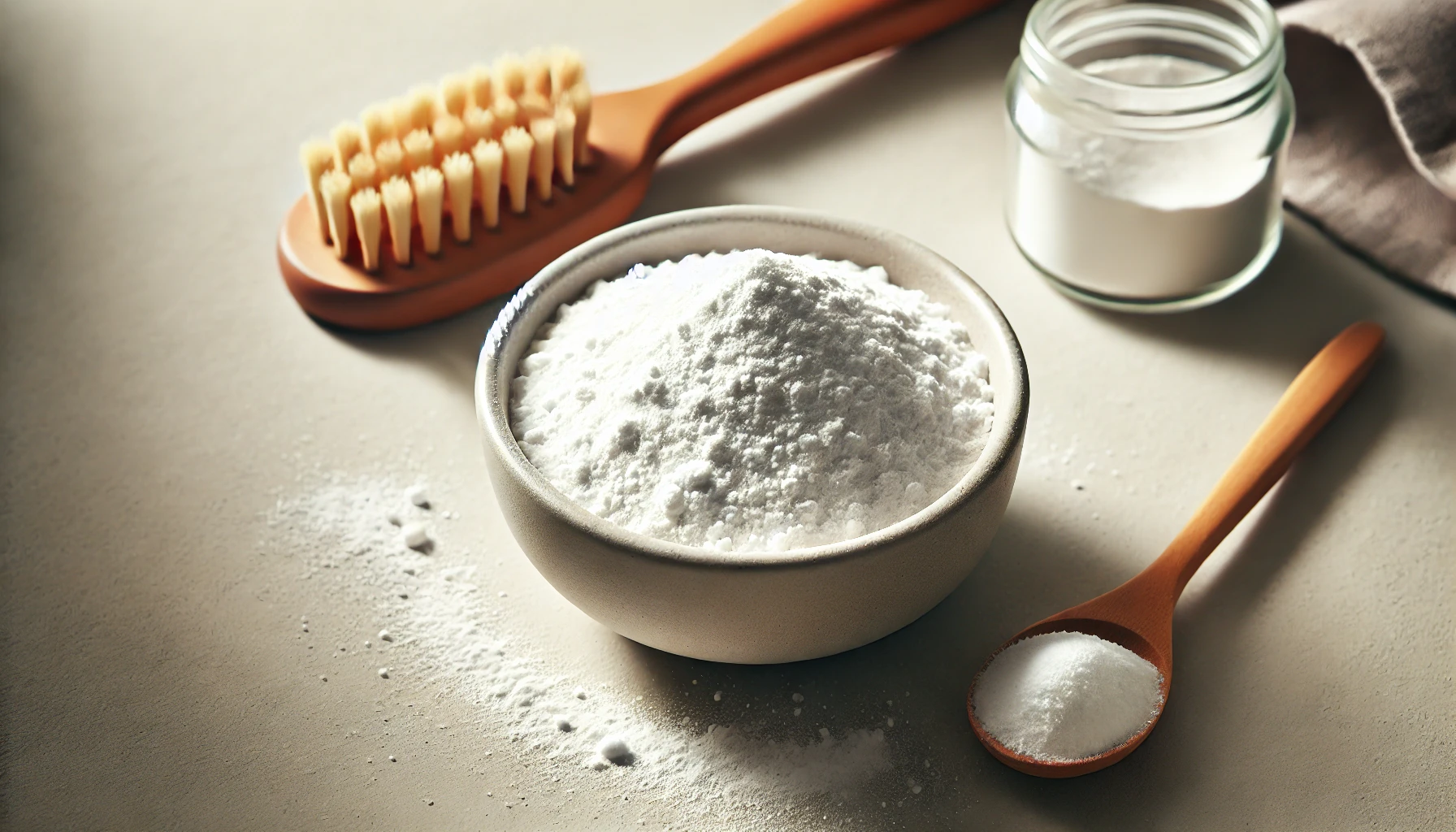
Baking Soda: A Natural Deodorizer
Baking soda, or sodium bicarbonate, is commonly added to cat litters for its natural deodorizing properties.
As a base, it neutralizes acidic compounds found in cat urine and feces, reducing odor.
Its inclusion provides an extra layer of odor control, enhancing the overall effectiveness of the product.
Baking soda neutralizes odors by balancing acidic compounds, enhancing litter performance without artificial fragrances.

Antimicrobial Agents and Bacterial Control
Some cat litters contain antimicrobial ingredients that inhibit the growth of bacteria responsible for bad odors.
By controlling these microorganisms, antimicrobial litters not only reduce odors but also create a cleaner environment for cats and owners alike.
Antimicrobial agents in cat litter reduce bacterial growth, minimizing odors effectively and creating a cleaner environment.
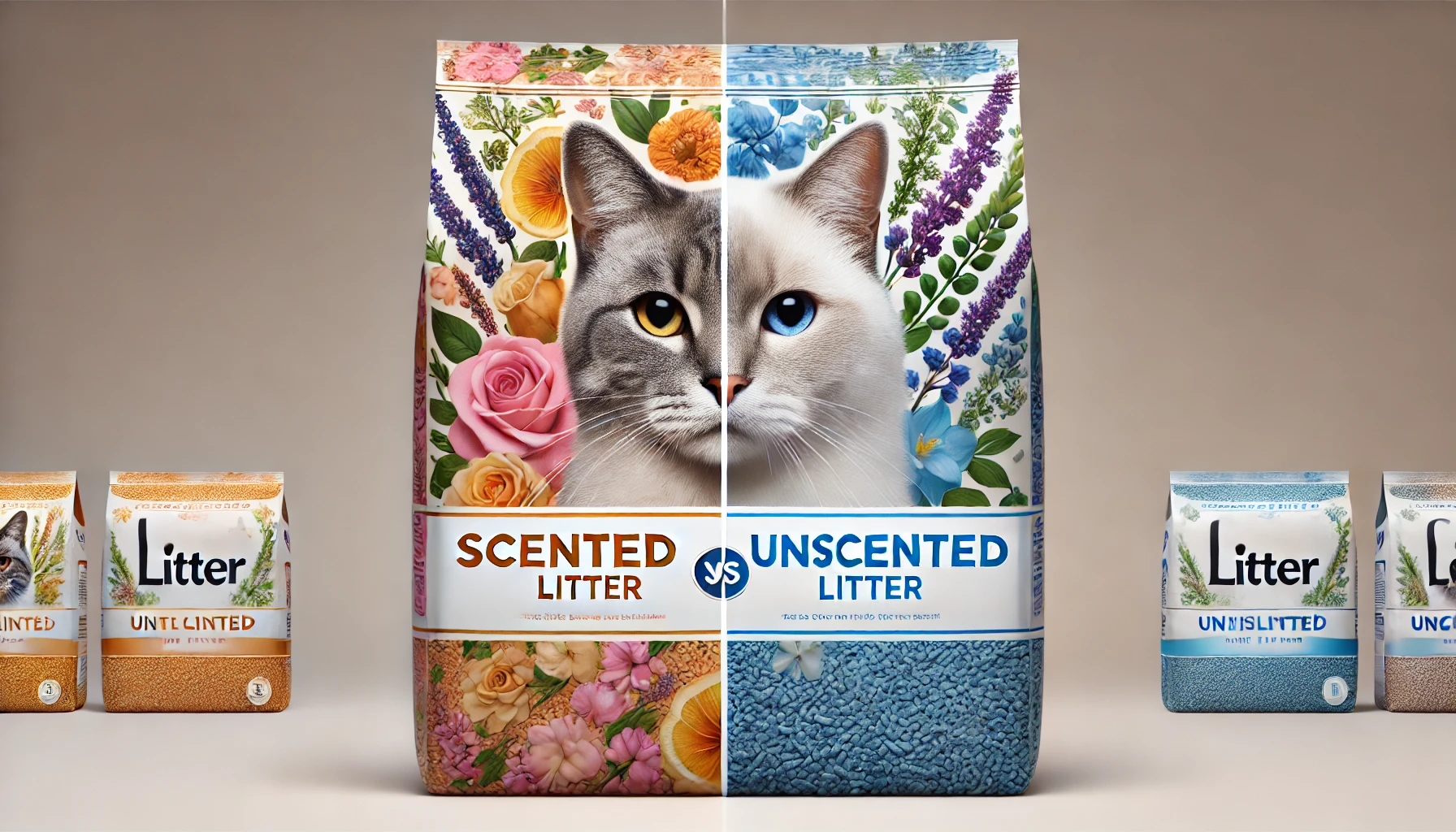
Scented vs. Unscented Litters: Advantages and Disadvantages
When selecting the perfect cat litter, it’s important to consider whether it is scented or unscented:
- Scented Litters: These contain added fragrances to mask odors. While some cats may not mind, others may find the strong scents overwhelming, which can deter them from using the litter box.
- Unscented Litters: Unscented litters use odor-neutralizing technologies without added fragrances. They are generally recommended for sensitive cats or owners who prefer to avoid artificial scents.
Understanding these technologies will enable you to make decisions that balance effective odor control with your cat’s comfort.
- Scented Litters: Added fragrance masks odors but may deter some cats.
- Unscented Litters: Odor-neutralizing without fragrance, ideal for sensitive cats.
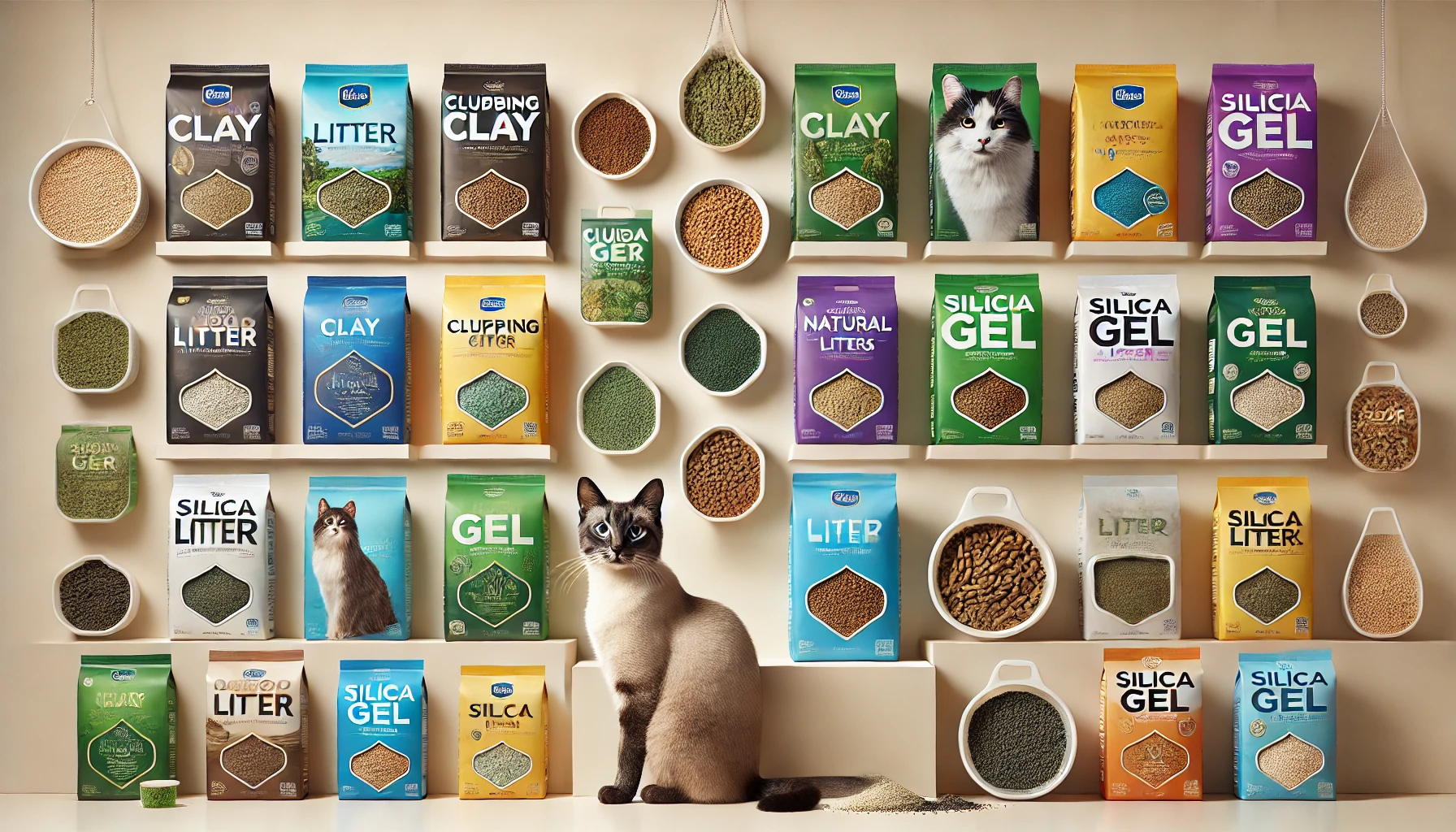
How Different Odor-Blocking Litters Stack Up Against Each Other Effectively
Choosing the right cat litter is essential for maintaining a fresh-smelling home.
Evaluating this product involves a thorough review of the effectiveness of various odor-blocking litters, which requires understanding the factors that influence odor control and comparing popular brands and user experiences.
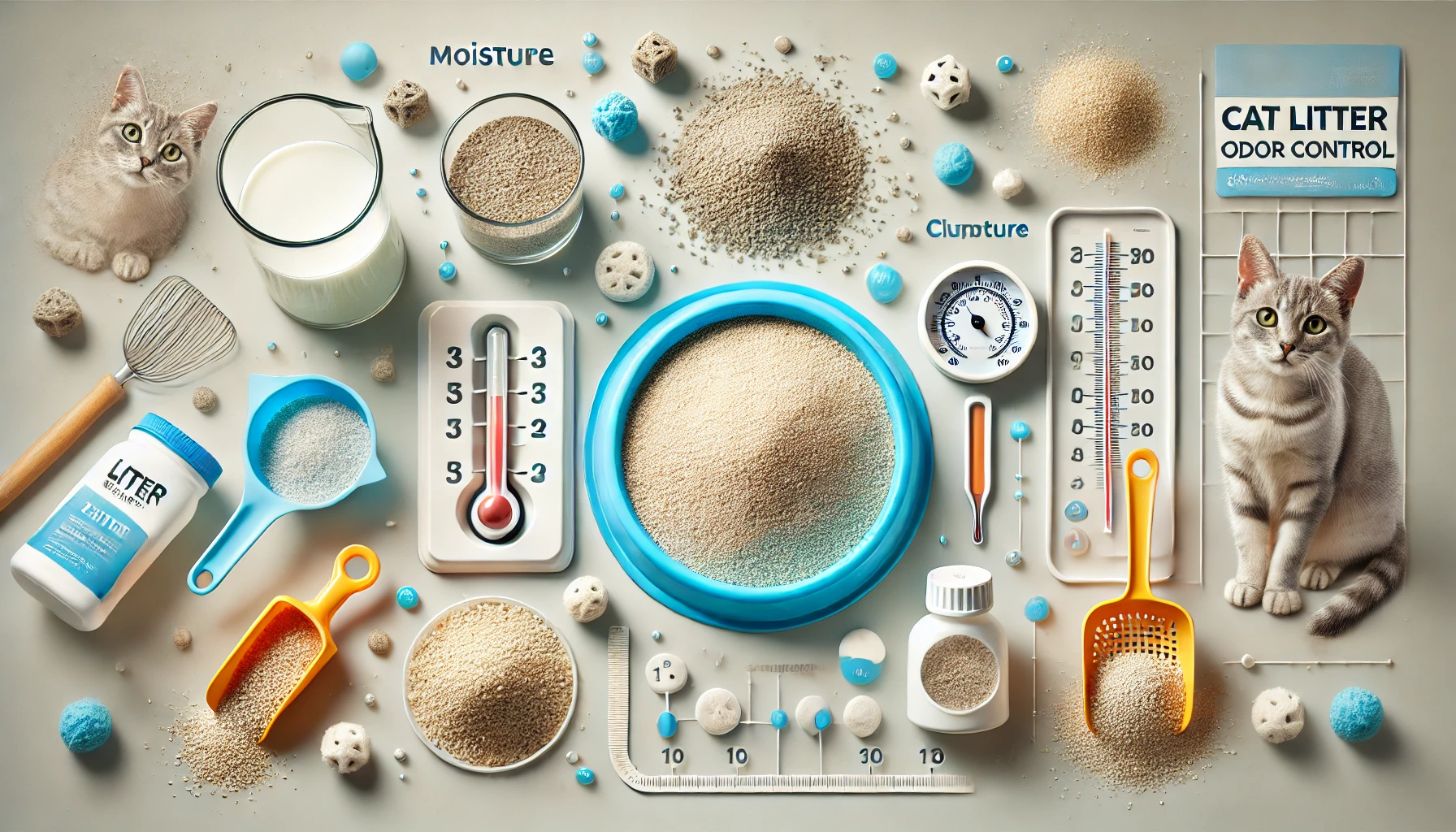
Factors Affecting the Performance of Odor Control
The effectiveness of a cat litter in controlling odors is primarily determined by several key factors:
- Absorbency: High absorbency prevents moisture buildup, reducing bacterial growth and foul odors.
- Clumping Ability: Good clumping facilitates easy waste disposal, preventing persistent odors.
- Material Composition: Materials like activated charcoal or baking soda enhance the litter’s odor-neutralizing capabilities.
- Dust Levels: Low-dust formulas improve air quality and limit the spread of odors.
- Scented vs. Unscented: Scented litters mask odors, while unscented options rely on neutralizing technologies.
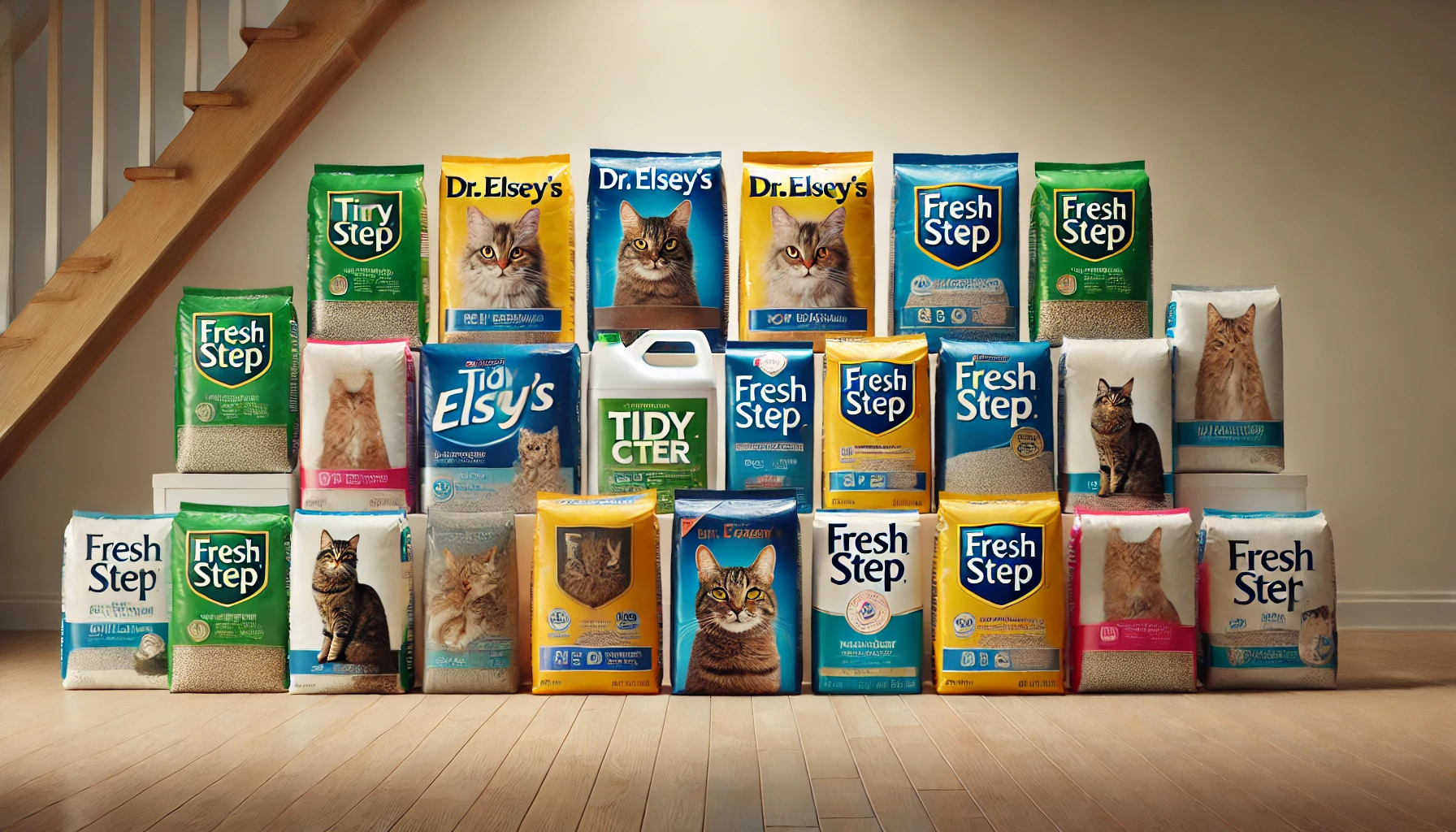
Comparative Analysis of Popular Brands
When comparing popular cat litter brands, the odor-blocking technology and user satisfaction are key factors to consider:
- Dr. Elsey’s Ultra Unscented Clumping Clay Cat Litter: Known for exceptional odor control and hypoallergenic properties.
- Purina Tidy Cats Naturally Strong Unscented Cat Litter: Utilizes activated charcoal for enhanced odor elimination.
- Fresh Step Clean Paws Multi-Cat Scented Clumping Cat Litter: Offers strong clumping and added fragrance, ideal for multi-cat households.
- World’s Best Lavender Scented Clumping Corn Cat Litter: A natural, flushable option with a soothing fragrance.

User Reviews and Satisfaction Levels
Customer feedback provides valuable insights into the real-world performance of these products:
- Dr. Elsey’s Ultra Unscented Clumping Clay Cat Litter: Users praise its excellent clumping ability and low dust production, which help limit odors.
- Purina Tidy Cats Naturally Strong Unscented Cat Litter: Customers appreciate its long-lasting odor control and all-natural composition.
- Fresh Step Clean Paws Multi-Cat Scented Clumping Cat Litter: Reviewers highlight its effectiveness in multi-cat homes and its pleasant fragrance.
- World’s Best Lavender Scented Clumping Corn Cat Litter: Users value its eco-friendliness and mild fragrance.
By considering these factors and reviews, you can make an excellent choice in cat litter, ensuring effective odor control and a pleasant environment for both you and your feline companion.
Understanding factors like absorbency, clumping, and material composition helps in comparing and choosing the best odor-blocking cat litters.
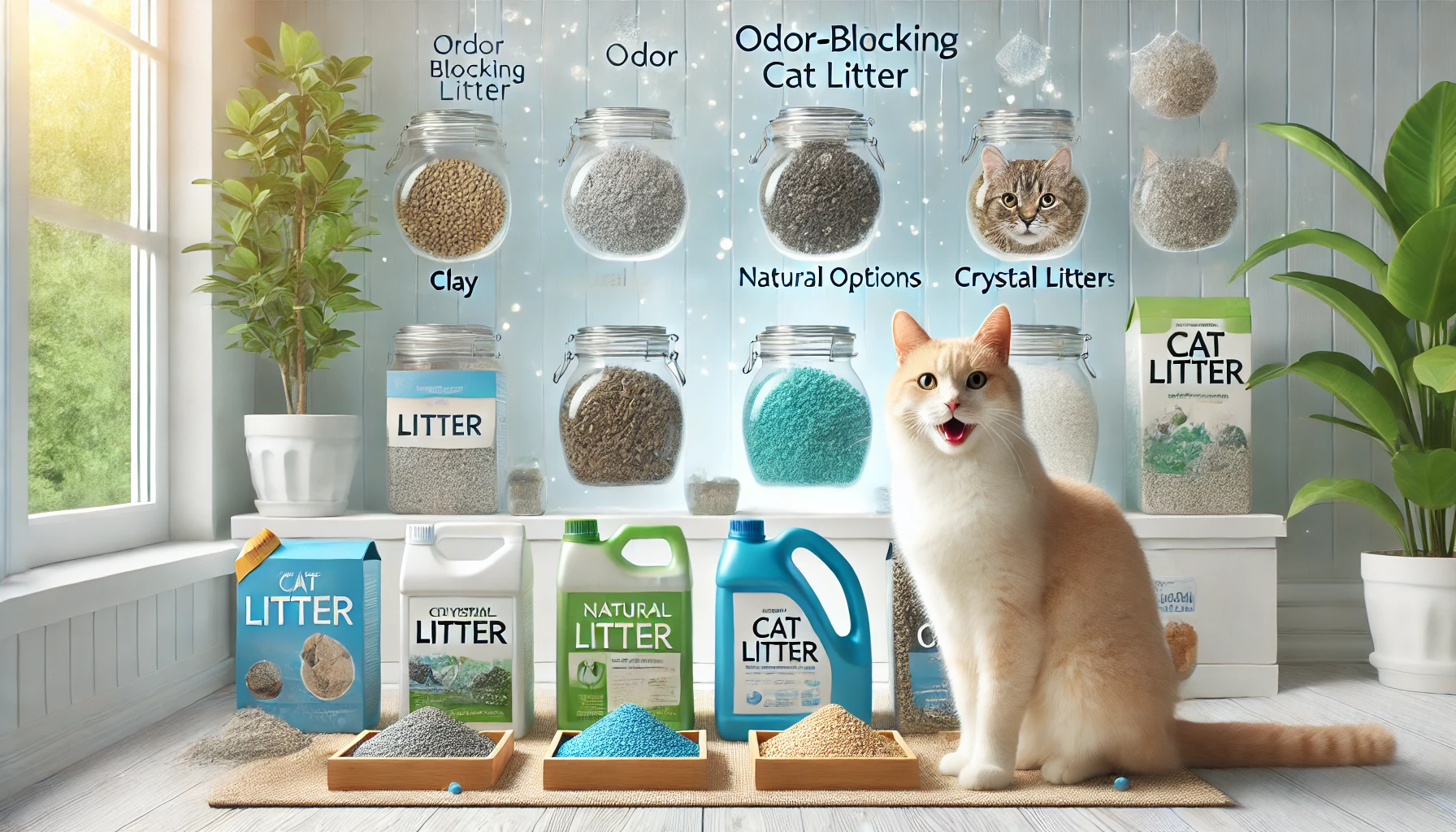
Choosing the Right Odor-Blocking Litter for Your Cat
Choosing the right odor-blocking cat litter is one of the most critical decisions you will make to keep your house fresh and your cat comfortable.
This decision involves considering your cat’s preferences, environmental concerns, and budget.

Comparing Your Cat’s Preferences and Sensitivities
Cats can be quite particular about their litter.
Factors to consider include:
- Texture: Some cats prefer fine-grained litters, while others favor coarser textures.
- Smell: Scented litters mask odors, but strong fragrances may deter cats from using the box. Unscented litters are often recommended for sensitive cats.
- Dust Levels: Low-dust litters are beneficial for cats with respiratory issues and help maintain clean indoor air quality.
Observing your cat’s behavior can reveal their preferences.
If your cat avoids the litter box, it might indicate discomfort with the current litter type.
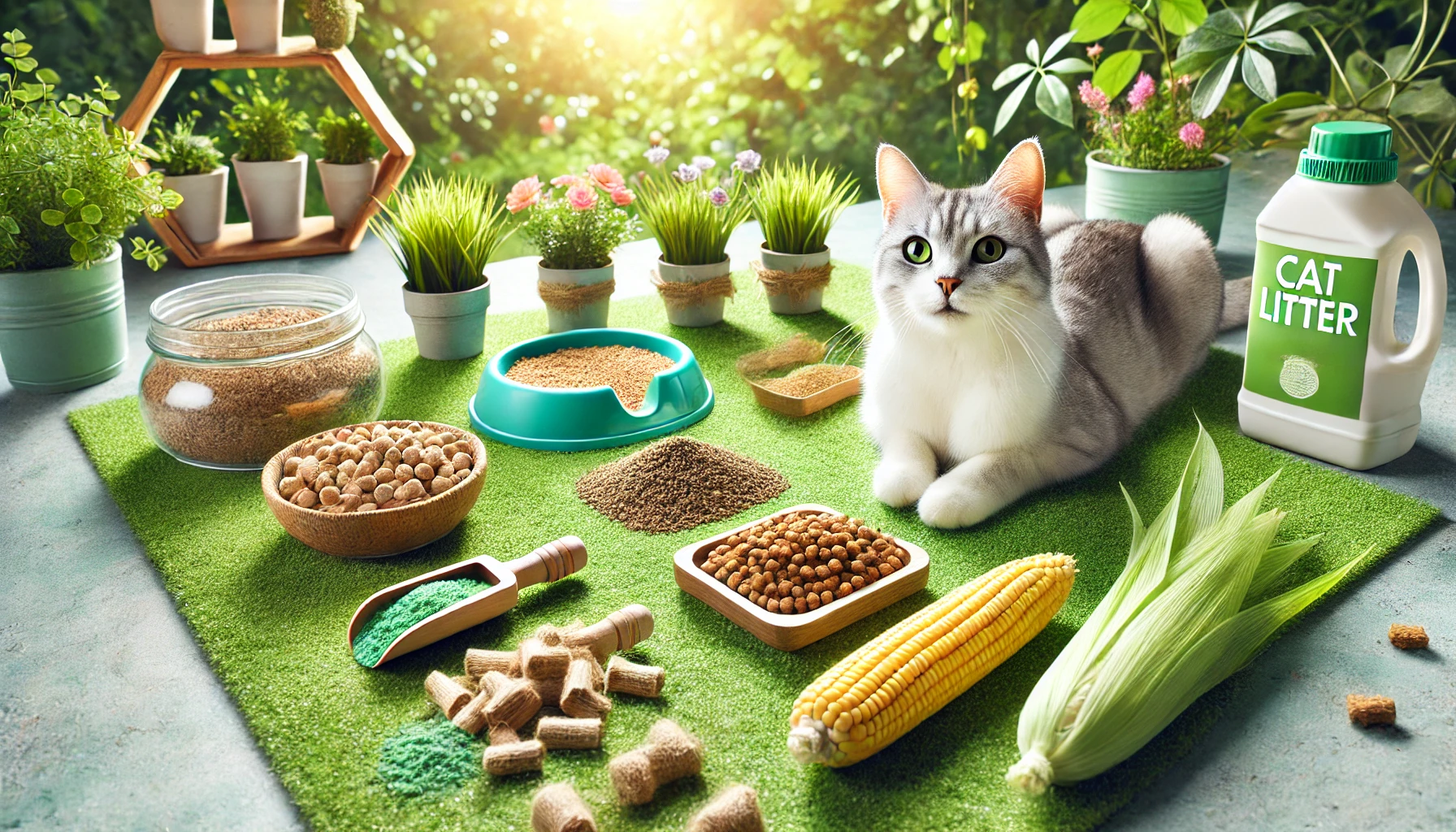
Environmental Considerations and Sustainability
Eco-friendly cat litters are becoming popular among environmentally conscious cat owners.
Made from natural, biodegradable materials, these litters offer ecological benefits.
Common materials include:
- Recycled Paper: Good for absorbency and gentle on paws.
- Wood Pellets: Natural odor control and compostable properties.
- Plant-Based Materials: Options like corn or wheat provide renewable, biodegradable alternatives.
Choosing sustainable litters reduces environmental impact and supports eco-friendly practices.
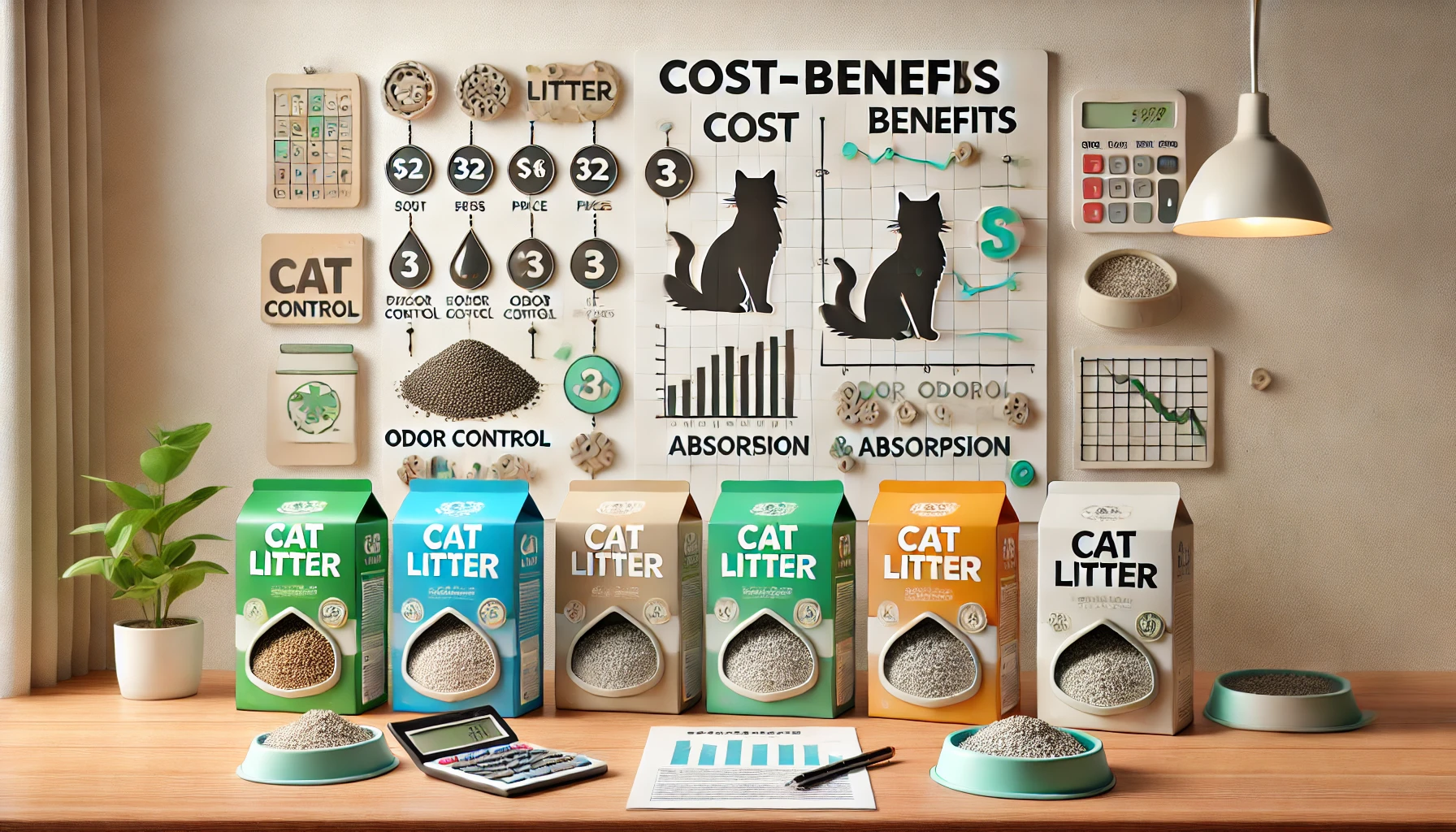
Cost-Benefit Analysis of Different Products
When evaluating the performance versus the cost of cat litters, two main categories exist:
- Premium Litters: More expensive but typically offer better odor control and clumping ability.
- Budget-Friendly Litters: More affordable but may need more frequent changes as they may not retain odors for extended periods.
Balancing cost with effectiveness ensures that you provide comfort for your cat without overspending.
By considering your cat’s preferences, environmental impact, and budget, you can choose an odor-blocking litter that satisfies both you and your feline companion.
Finding the right cat litter involves balancing your cat’s preferences, environmental concerns, and budget for optimal odor control and comfort.
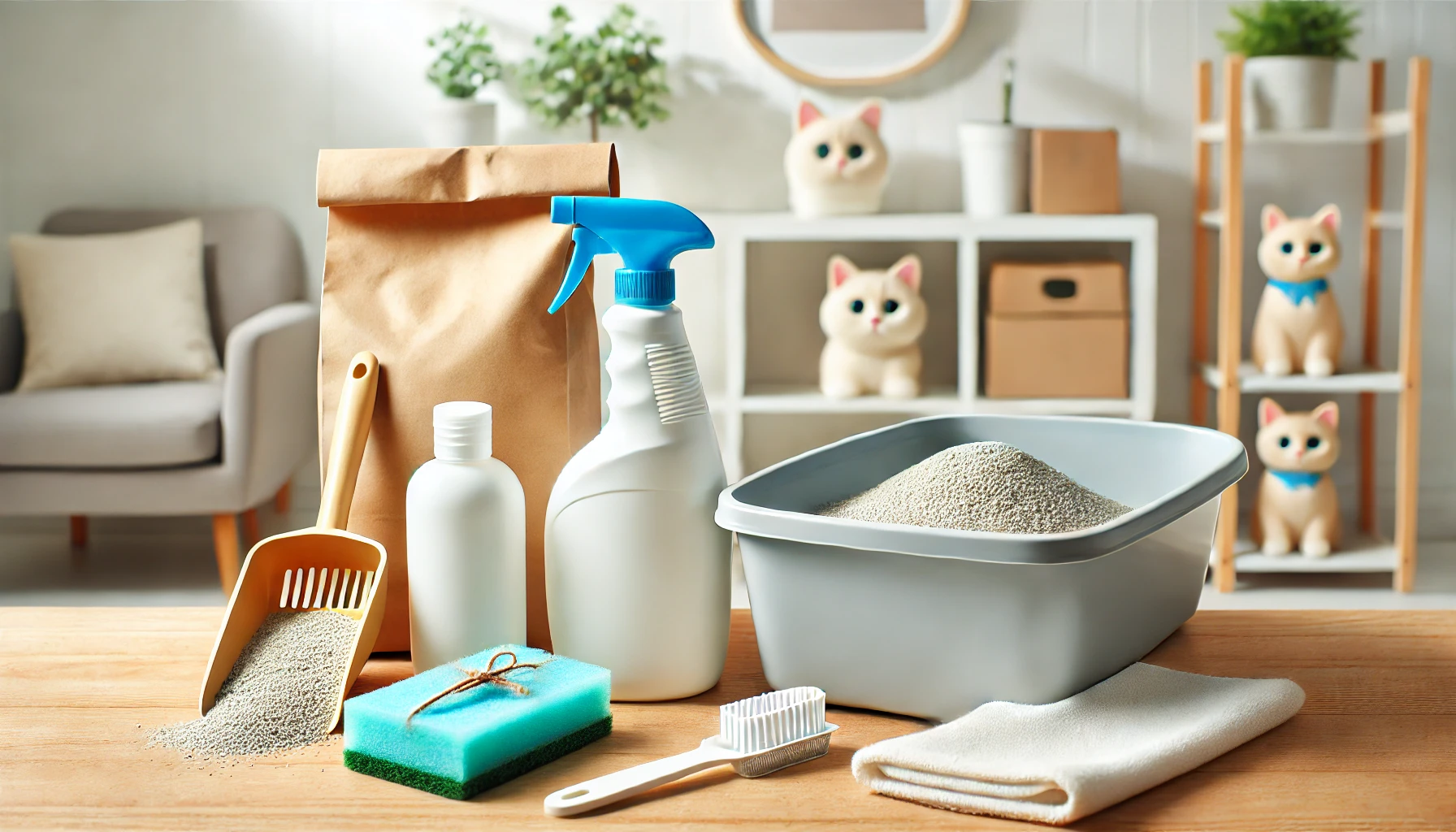
Maintaining Litter Box Hygiene for Ideal Odor Control
Proper hygiene within a litter box is essential for odor control and maintaining your cat’s health.
Regular cleaning not only prevents unpleasant smells but also encourages your cat to continue using the litter box consistently.
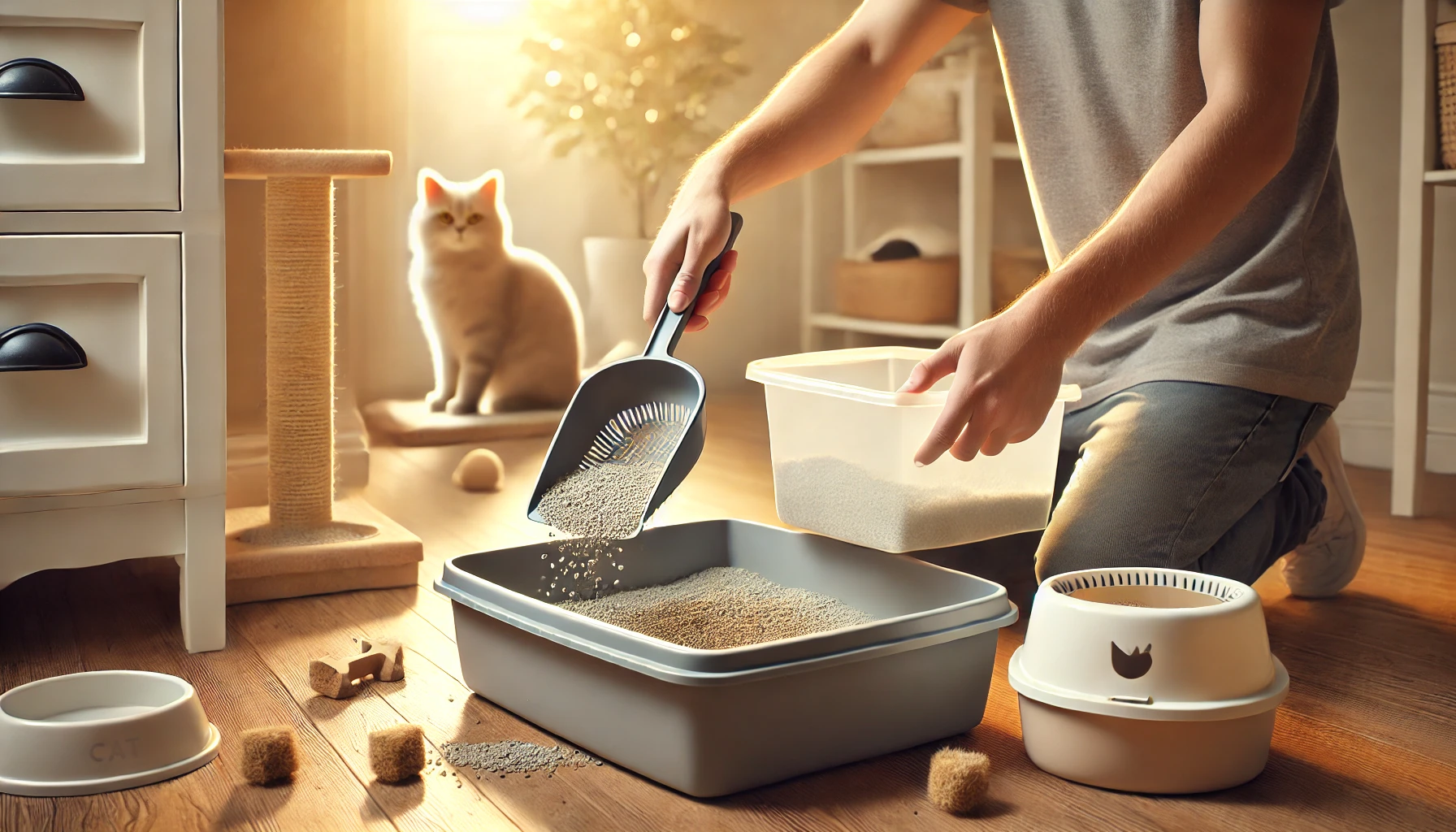
Routine Cleaning and Scooping
Establishing a regular cleaning routine is important:
- Daily Scooping: Remove solid waste and clumps at least once a day to prevent odor buildup and keep the surrounding area clean.
- Weekly Litter Replacement: Change the litter completely every week to maintain freshness and reduce bacterial growth.
- Monthly Deep Cleaning: Clean the litter box with mild soap and water once a month to eliminate residual odors and enhance hygiene.
These practices help minimize odors and create a hygienic environment for your feline friend.
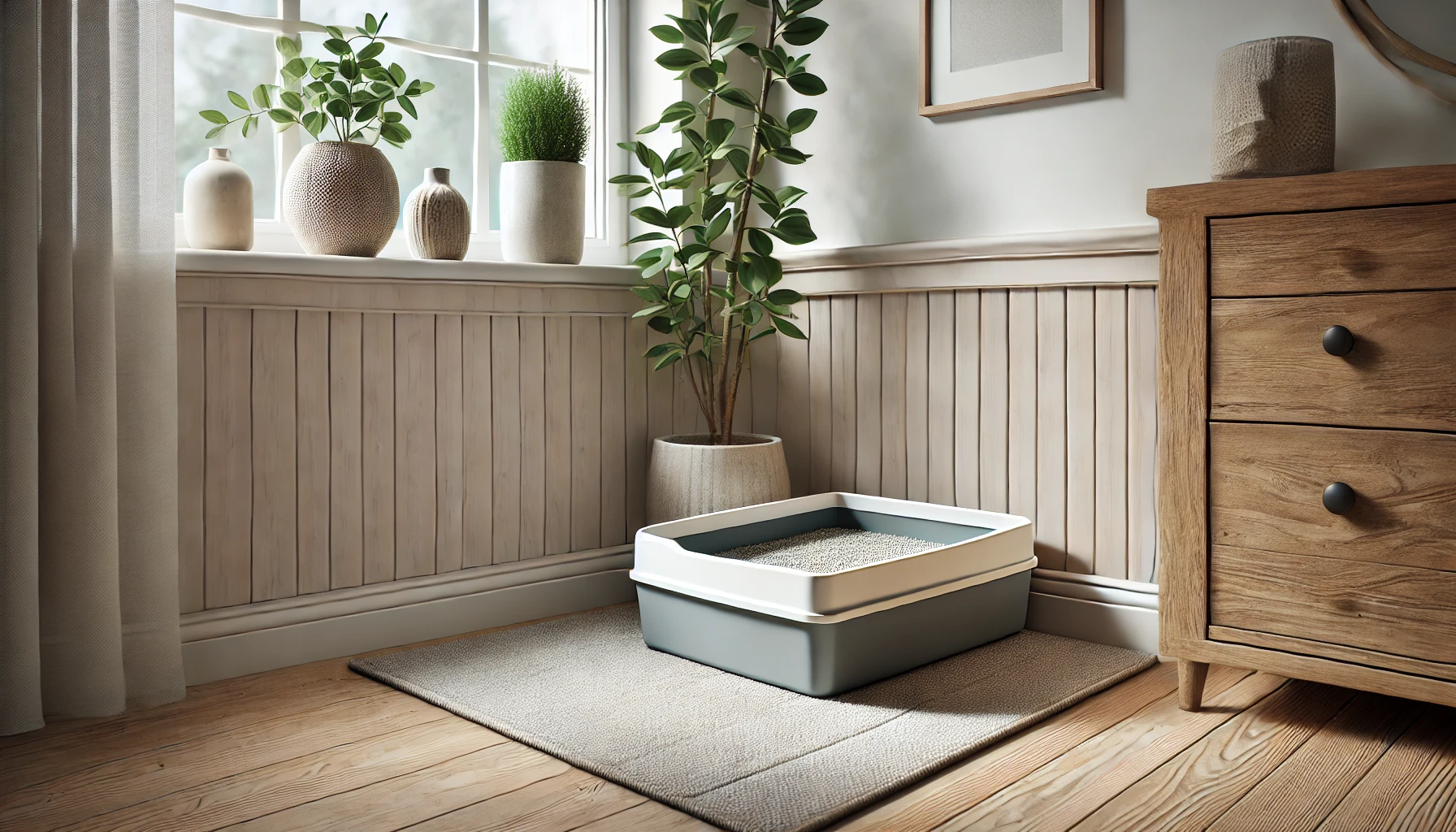
Appropriate Location of the Litter Box
The placement of the litter box plays a significant role in odor control:
- Well-Ventilated Areas: Place the litter box in a well-ventilated area to prevent odors from accumulating.
- Low-Traffic Zones: Position it in a quiet, low-traffic area to give your cat privacy and reduce stress, encouraging regular use.
- Avoid Closed-In Spaces: Avoid placing the litter box in small, enclosed spaces where odors can concentrate.
Positioning the litter box strategically helps minimize odors and makes your cat more comfortable using it.
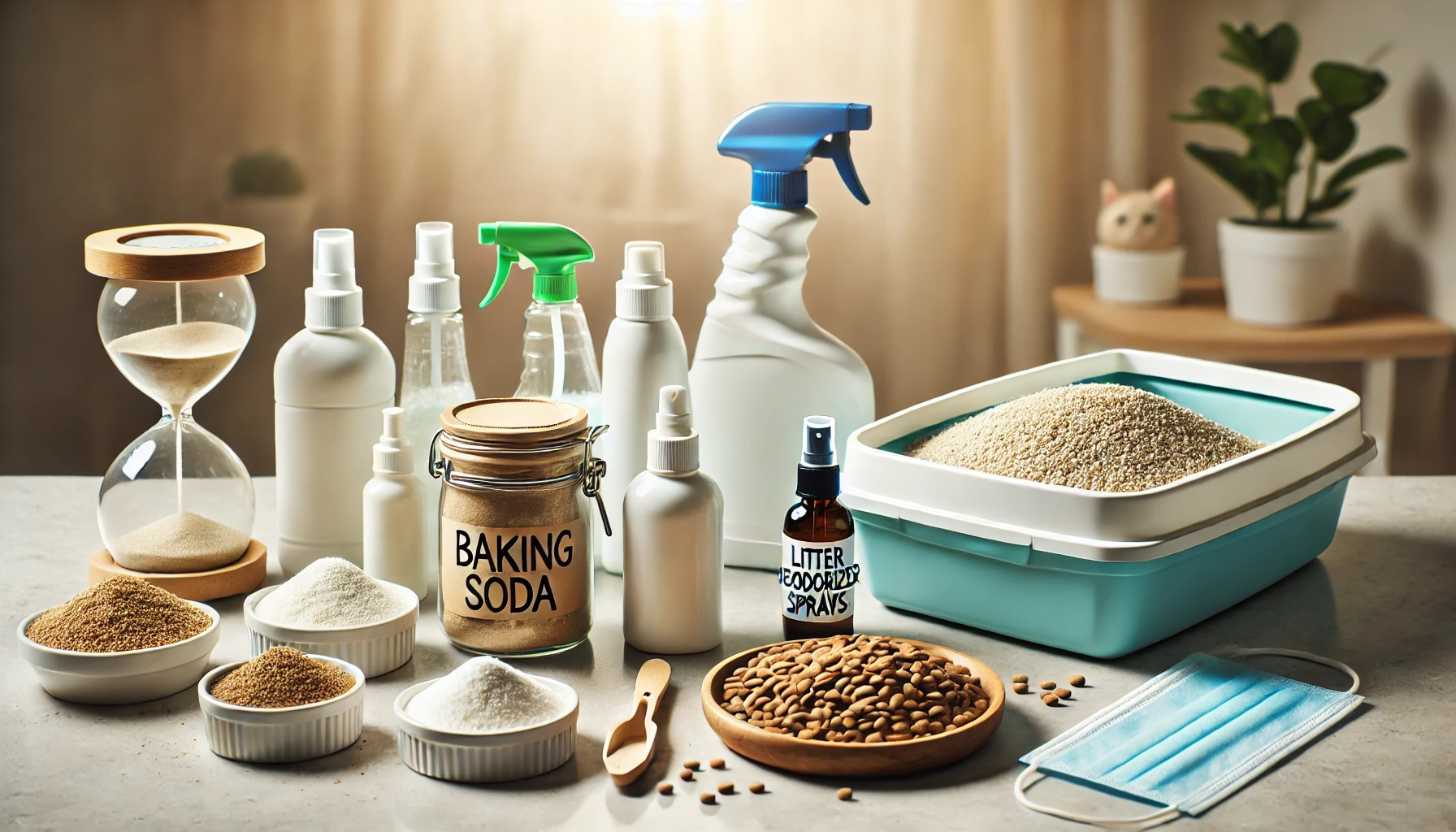
Additional Tips for Minimizing Odor
Consider these additional tips to control and reduce odors:
- Apply Odor-Neutralizing Products: Sprinkle baking soda or other odor-neutralizing products into the litter to enhance odor control.
- Keep More than One Litter Box: Provide one litter box per cat, plus an extra, to prevent overcrowding and reduce odor buildup.
- Replace Litter Boxes Regularly: Plastic litter boxes can retain odors over time. Replacing them annually helps maintain high hygiene levels.
By following these tips, you can effectively manage odors and create a comfortable environment for both you and your cat.
Proper litter box hygiene, including regular scooping and deep cleaning, is essential for odor control and your cat’s well-being.
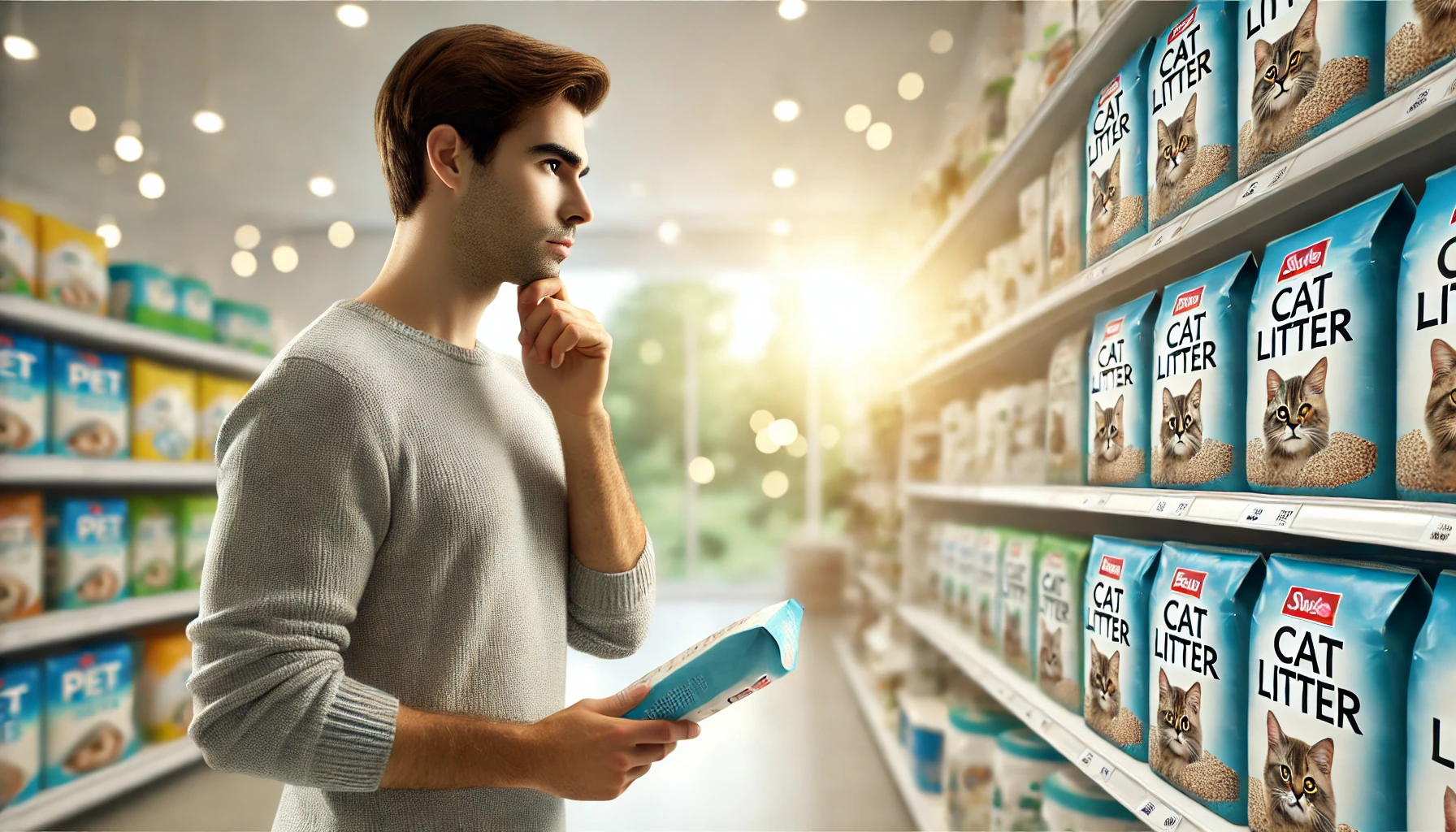
Choosing Wisely: Conclusion to Odor-Blocking Technology in Cat Litter
Odor control is a crucial aspect of cleanliness and comfort for both your living environment and your cat.
Understanding the different odor-blocking technologies in cat litters empowers you to make informed decisions, considering your cat’s needs, environmental impact, and budget.
By examining factors like activated charcoal, baking soda, and antimicrobial agents, you gain insight into how each option battles odor in its unique way.
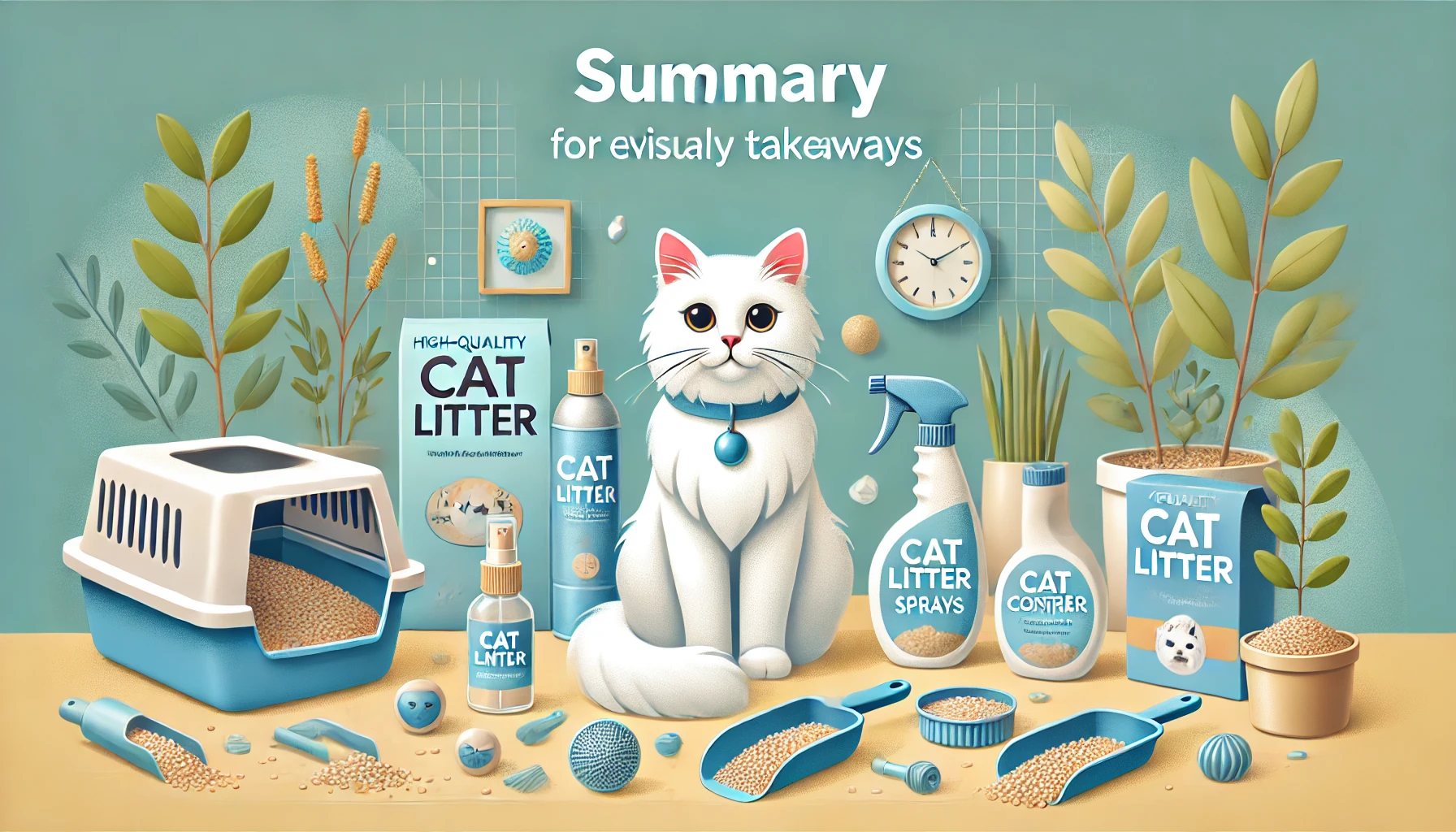
Key Takeaways for the Most Effective Odor Control
When purchasing odor-blocking cat litter, consider these essential factors:
- Choose According to Your Cat’s Preferences: Take into account your cat’s texture and scent preferences to ensure they are comfortable using the litter box frequently.
- Assess Environmental Impact: Eco-friendly options like recycled paper, wood pellets, and plant-based materials provide sustainability and environmental benefits.
- Balance Cost with Performance: Premium litters offer strong odor control and durability, while budget options may require more frequent changes but still remain effective.
Applying these considerations when selecting a cat litter will help maintain a fresh home environment and support your cat’s hygiene needs.
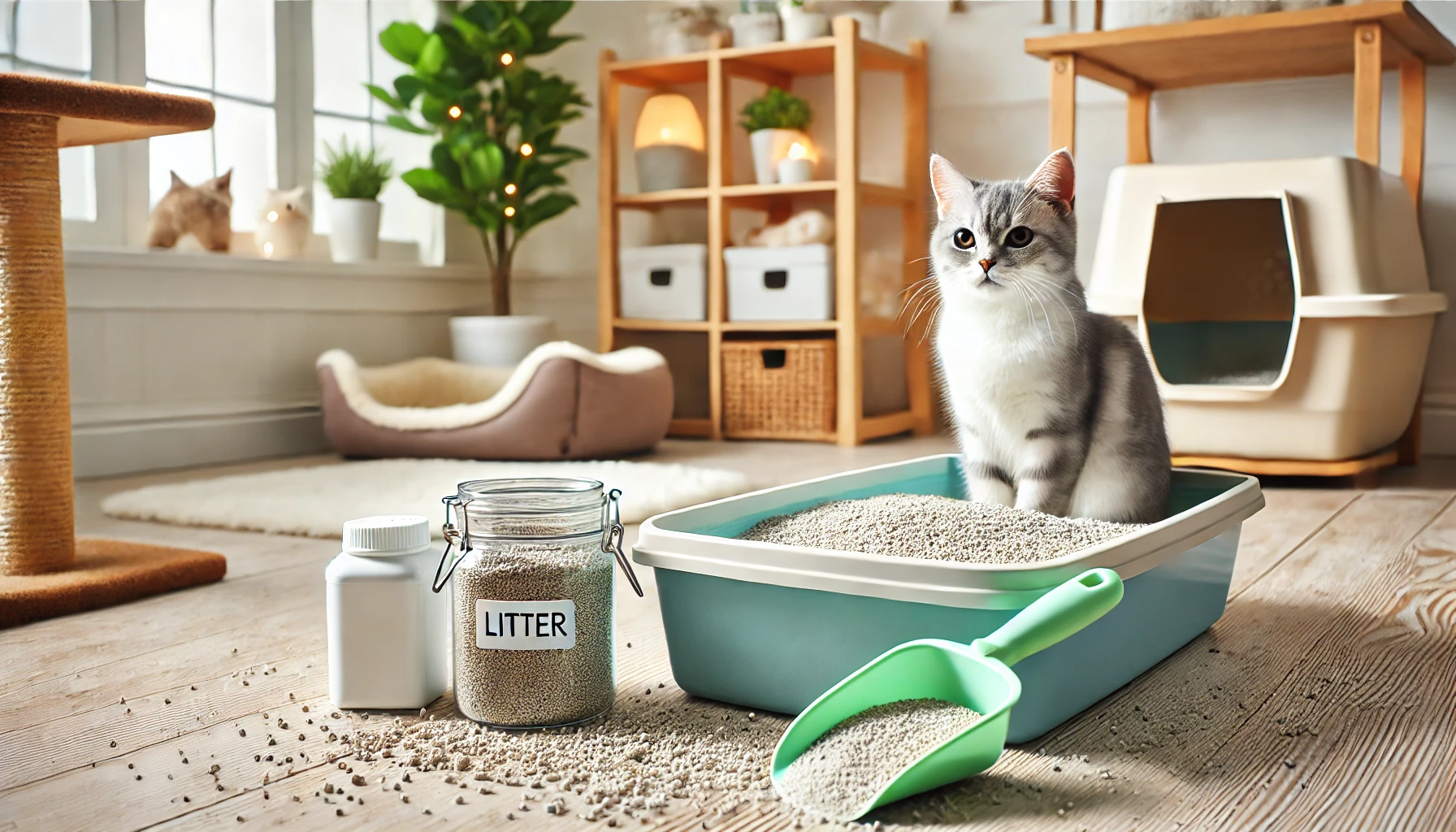
Keeping the Litter Box Clean for Long-Lasting Freshness
Odor-blocking cat litter is only part of the solution.
The best odor control comes from regular maintenance.
Establish a cleaning routine that includes:
- Daily scooping of waste to prevent odors from building up.
- Weekly litter replacement to reduce bacterial growth.
- Monthly deep cleaning with soap and water to eliminate any residual odor.
Additionally, placing the litter box in well-ventilated, low-traffic areas can prevent odor concentration and make it more comfortable for your cat to use the litter box.
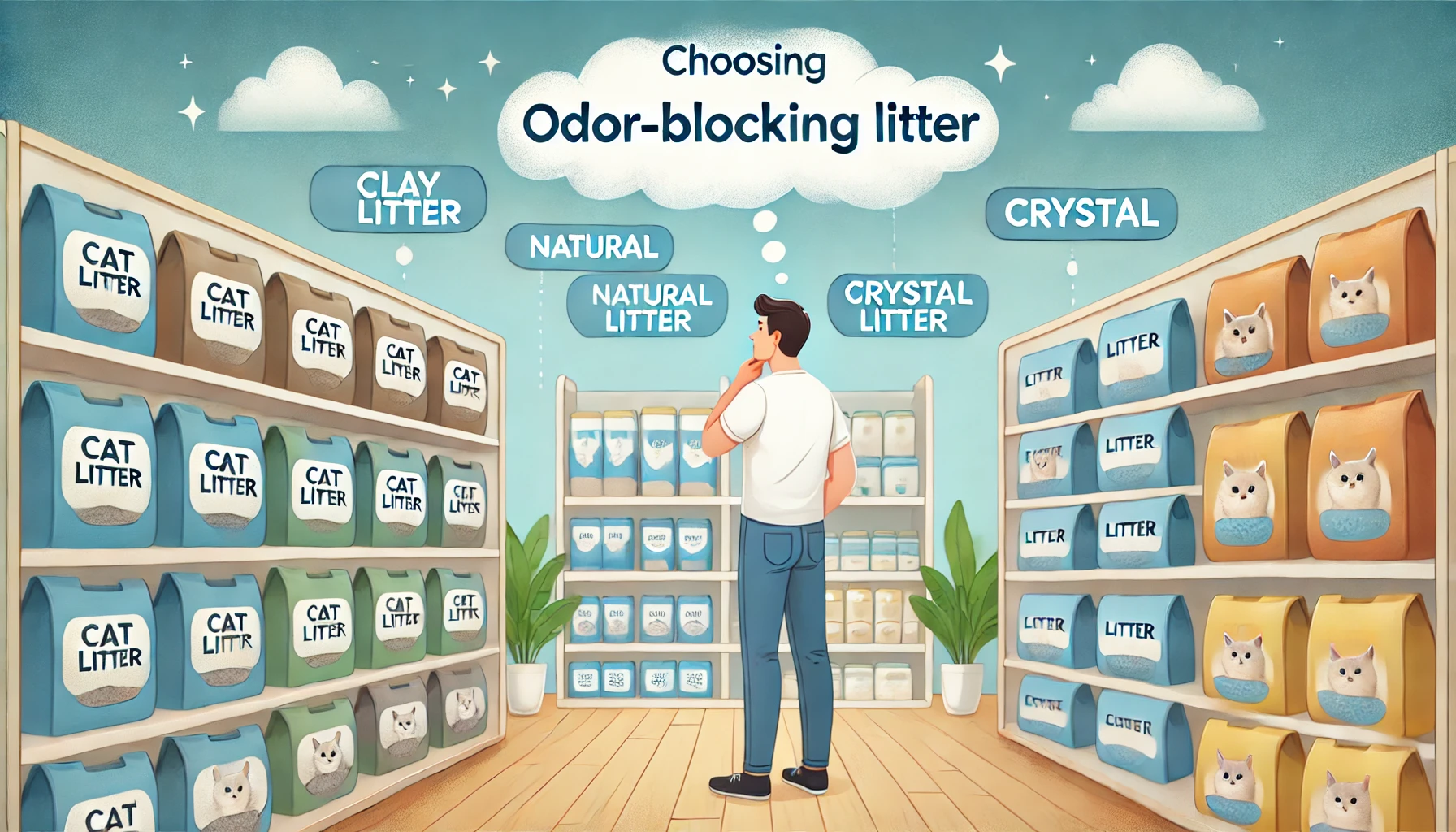
Odor-Blocking Litter: Tips for Choosing the Right One to Maintain a Pleasant Environment
Investing in the right odor-blocking cat litter is about more than just feline hygiene; it’s a commitment to a clean, inviting home.
By understanding the various technologies available, you can choose a product that minimizes environmental impact, fits your budget, and elevates odor control.
With this information, you can create a more hygienic and refreshing environment for both you and your cat.
Odor-blocking cat litter is an investment in your home’s freshness and your cat’s hygiene. Choose a litter that balances odor control, environmental impact, and cost-effectiveness.
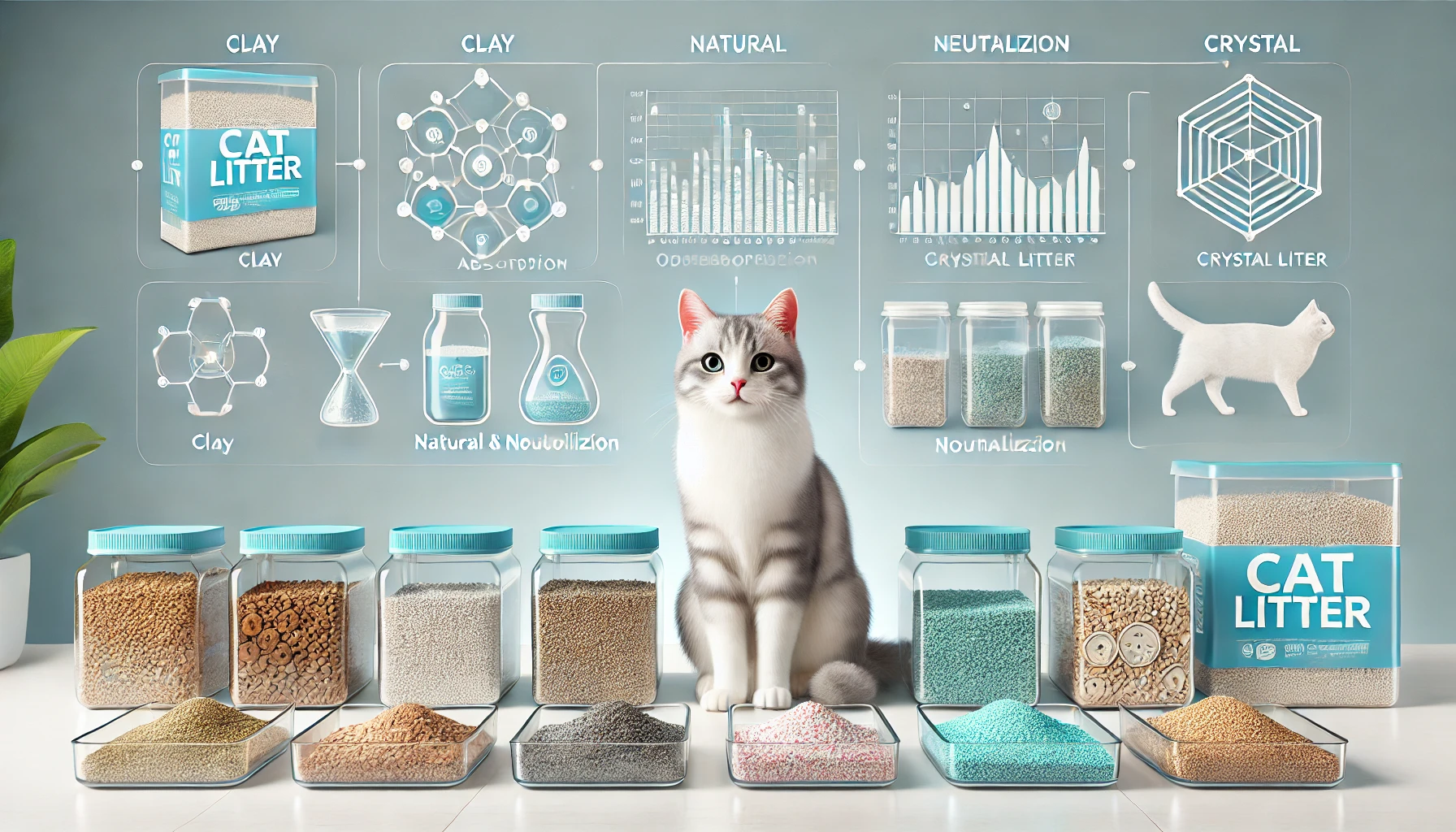
Odor-Blocking Technology in Cat Litter: Frequently Asked Questions
Odor-blocking technology in cat litter helps maintain a fresh and comfortable environment for both you and your feline friend.
Below are some common questions and concise answers to help you understand this technology better.
What is odor-blocking technology in cat litter?
Odor-blocking technology in cat litter refers to various methods and materials used to neutralize or reduce unpleasant smells from the litter box, helping to maintain freshness in your home.
How does activated charcoal work in cat litter?
Activated charcoal absorbs odor-causing molecules within its porous structure, effectively neutralizing unpleasant smells rather than simply masking them with artificial fragrances.
Is baking soda a safe alternative for cat litter?
Yes, baking soda is non-toxic and widely used in cat litter due to its natural odor-absorbing properties.
It neutralizes acidic compounds found in cat urine and feces.
Do antimicrobial agents in cat litter harm cats?
Generally, antimicrobial agents in cat litter are safe for cats.
These agents help reduce bacterial activity, thus minimizing odors and promoting a cleaner environment.
Are scented or unscented litters better for odor control?
Most cat owners prefer unscented litter with good odor-blocking technology, as some cats may find strong fragrances overwhelming and avoid using the litter box.
How often should I change odor-blocking cat litter?
Scoop waste daily, replace the litter completely once a week, and perform a deep clean of the litter box monthly for optimal odor control.
Can I mix different types of cat litter for better odor control?
Mixing different types of litter may reduce the effectiveness of odor-blocking technologies and could discourage your cat from using the litter box.
Are natural cat litters effective for odor control?
Yes, natural cat litters made from materials like pine, corn, or recycled paper can effectively control odors, especially when combined with odor-blocking technologies.
Does the type of litter box affect odor control?
Yes, covered litter boxes can help contain odors, but they need to be well-ventilated and cleaned regularly to prevent odor buildup.

